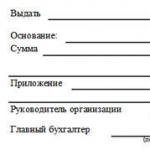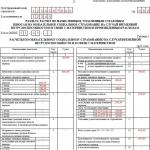For finishing building facades in modern construction Special blocks from modern materials. They have good technical characteristics, look great, are relatively inexpensive and very easy to use. For fastening, adhesive for gas silicate blocks is used, which fully satisfies all current safety standards.
Light blocks made of modern materials, thanks to their special structure, retain heat well inside the building. And in order not to deteriorate this property, for installation it is necessary to use not an ordinary solution, but a special mixture. Therefore, many are interested in the question, which adhesive for gas silicate blocks is better?
It is very difficult to give a definite answer, since there is no single brand on the market that would surpass all competitors in all respects. Each situation requires its own approach, so you must first of all pay attention to the technical characteristics of the glue and be guided by the operating conditions of the building, climatic zone, average annual air humidity level.
Types and composition of glue
There are several types of glue:
- - mixture for indoor masonry;
- - mixture for masonry outside;
- - mixture for masonry indoors and outdoors;
- - a mixture for laying on top of heated floors with special enhanced thermal conductivity and resistance to temperature effects;
- - mixture for masonry in places with high humidity and for finishing swimming pools. Highly resistant to moisture;
- - universal mixture with increased hardening speed.
All of the listed varieties are present on the building materials market in unlimited quantities. The price of glue for gas silicate blocks depends on the country of origin and technical characteristics. In general, it is accessible to most ordinary Russians. When making large wholesale purchases, you can save a decent amount, so it is important to correctly calculate the amount of materials required for repairs, so that during the work you do not have to purchase the missing amount.

The more universal properties the glue has, the more expensive it will cost. But save on building materials it is forbidden. A small gain now will lead to huge losses in the future. Any repairs are carried out with long term This means that the materials used must be of the highest quality and durable. This is the only way to resolve the issue of home decoration for many years to come.
The adhesive contains fractionated sand, Portland cement and special chemical compounds that are responsible for its properties. Moreover, all elements are non-toxic and absolutely safe for humans. During operation, they also do not react and do not create new compounds, which has a positive effect on the durability of the masonry. Preparation of the working solution is no different from the standard procedure. Simply add to a container of water required amount dry mixture and mix thoroughly until a homogeneous mass is formed.
Features of working with glue
The work is done using a regular trowel or spatula. Laying of gas silicate blocks on glue is carried out sequentially in a pre-selected direction. The master simply moves from one corner of the room to another, gradually covering the entire treated area. The blocks are pressed against each other as tightly as possible so that the seams are not visible. The width of the adhesive layer should be 2-15 millimeters, depending on the situation. Excess solution is removed from the surface using a damp cloth.

The glue dries in 2-24 hours depending on atmospheric conditions. It will take 7-10 days for it to reach its maximum density, so for the first time after repair it is better not to perform any manipulations with the treated surface. Glue consumption is approximately 15-20 kilograms per cubic meter. There is no need to add additional additives to the solution; the dry mixture already contains everything necessary for use.
The treated surface is pre-prepared for repair. To do this, it is leveled and primed. You can also carry out antifungal treatment using a special liquid. You can work with glue at temperatures from -8 to +30 degrees Celsius. The lower value is typical for winter, frost-resistant adhesive for gas silicate blocks. It may differ for other models.
Useful tips from professionals:
- The tools used in the work must be made of corrosion-resistant metal alloys of medium hardness.
- At high temperature environment and low air humidity, it is necessary to prime the surface to be treated immediately before installation. This will increase the level of adhesion of the mortar to the walls.
- It is necessary to carry out work wearing protective gloves and special glasses. If the composition gets into your eyes, you should immediately consult a doctor.
- Not worth it for a long time store the dry mixture in conditions of high humidity, as this may render it unusable for use.
Working with glue is no more difficult than with regular glue. cement mortar. You just need to follow the manufacturer's recommendations, and then everything will work out without any problems. The main thing is to always remember safety and not work without protective accessories, so that ordinary repairs do not turn into useless sick leave.
For quick installation of slabs and blocks made of aerated concrete, foam concrete and gas silicate, adhesive for gas silicate blocks is used. The price of block adhesive depends on the type, brand, base material and application. Adhesive for gas silicate blocks is produced using cement based and fine sand with various additives.
- plastic;
- weatherproof;
- moisture resistant;
- economical.
- sets quickly.
Before applying glue for gas silicate blocks, it is necessary to carefully prepare the base - clean it of dirt and degrease it. The dry construction mixture is mixed with water until ready solution, after which it is applied to the surface using a notched trowel. This glue forms a thin, strong seam between the blocks, which significantly improves the wear resistance of the structure.
The Master Tibot construction hypermarket sells a wide range of not only adhesives for aerated silicate blocks, but also adhesives for aerated concrete blocks. From us you can buy glue for gas silicate blocks at the most affordable price in the city. We deliver goods throughout Moscow and the Moscow region. You can check the cost of the selected products in our online store.
Large-block construction of houses is beneficial in all respects: it is carried out faster than traditional brickwork Moreover, glue for gas silicate blocks is consumed much less than cement-sand mortar. Now on sale the new kind– foam glue in cans: one tube is equivalent to 25 kg of dry mixture, but the product has not been time-tested.
You need to choose a material according to its characteristics. Adhesive mixtures will cost more than cement mixtures, but in the end their cost turns out to be less than production costs masonry mortar, delivery of sand and cement to the construction site.
Gluing blocks requires the professionalism of masons and the precise geometry of the cellular brick.
Features and advantages of adhesive for gas silicate blocks
Masonry- adhesive composition EK 7000 GSB
Special adhesive mixtures, in addition to Portland cement, contain a number of other components. Quartz sand provides a low thickness of the bonding layer. Mineral additives retain water and prevent cracks. Polymer plasticizers reduce heat loss through mortar joints and increase the adhesion force between blocks.
Advantages of adhesive mixtures:
- Thin joints (2 - 5 mm) - and the cement-sand mixture requires a layer at least 15 mm thick, otherwise the masonry will lose strength due to the hygroscopicity of the blocks.
- Economical – to put aerated concrete blocks, the glue required is 6 times less than a regular solution, and the price is only twice as high.
- Plastic.
- Fire safety and fire resistance.
- Resistance to moisture and low temperatures.
- No cold bridges in the masonry.
- Connection strength.
- Hardening speed.
- Ease of production ready mixture from a semi-finished product.

How to choose an adhesive composition
To avoid having to check the quality of your purchase during direct installation, be sure to use the following recommendations:
- When choosing a manufacturer, it is better to choose a company with well-established technology.
- A low price is a sign of a fake or low-quality product.
- Use the product within the time indicated on the packaging.
- Excessive moisture or low temperature in the room for storing mixtures leads to a deterioration in the physical and mechanical properties of the resulting solutions and a decrease in the strength of the masonry.
- You should adhere to the technology for preparing the solution, conditions of use, drying - if you have to work in winter period at temperatures below +5, it will be necessary to add special components that increase the frost resistance of the composition.

When choosing, specify the amount of glue. According to the norm, consumption per 1 m2 is 1.5-1.6 kg of adhesive powder. Knowing the consumption of glue for gas silicate blocks per 1 m3, it is easy to calculate the dry mixture required for constructing the box. To dilute 25 kg, 6 - 6.5 liters of water are required, that is, the weight of the finished glue from 1 package is 31 - 31.5 kg. You can calculate the quantity for masonry using a calculator.
To glue a cubic meter of masonry you will need 15 - 40 kg of mortar - consumption depends on the thickness of the layer. For comparison: at 100 cubic meters gas silicate uses 3000 kg of cement. The layer of the applied composition is several times thicker, which means the consumption is higher.
What is the glue consumption for gas silicate blocks?
To understand how much solution is needed, consider the table. The information given is based on the minimum joint thickness.
How to optimize glue consumption for gas silicate blocks, technological techniques
Before you start gluing the blocks, you should do preparatory work and operations so as not to waste excess glue, and at the same time create a durable and a reliable wall.


- Basic masonry techniques. The adhesive mass is applied to the vertical or horizontal plane of the first laid block using a 6x6 cm comb spatula. Place the prepared gas silicate blocks The glue should be applied lightly to the base, followed by pressing down with a rubber tool (hammer). This way a thickness of no more than 5 mm is achieved. The reinforcing mesh is covered with a 2-5 mm layer of glue, and metal rods (diameter 8 mm) are poured. Optimal temperature drying – +5 – +25 o C.
Glue consumption depends on weather conditions. If work is carried out in winter, a frost-resistant composition is used.
If you adhere to the instructions and prepare the mixture correctly, then the glue consumption for gas silicate blocks will be economical, and the mounted walls will be monolithic.
Glue is a mixture of substances that allows materials to reliably adhere to each other. And in order for the seam to be strong and durable, you should use a high-quality product. To secure gas silicate blocks, you need a special glue. This composition usually contains sand, cement, as well as organic and mineral plasticizers.
Currently available in trade for working with gas silicate blocks a large assortment funds. The result of selecting such a composition is influenced by the preferences of the master and the conditions of installation work.
Which mixture to choose for laying blocks
To determine which adhesive for gas silicate is the best, it is worth considering reviews from customers who have already tested the material from their own experience. Let us dwell in detail on the brands of glue that have gained the most popularity.
"Zabudova"
This mixture is excellent for installing blocks in winter. This is possible thanks to the ingredients included in it. There is a special additive that is not exposed to even severe frost (frost-resistant). Most builders respond positively to the product, because it has such advantages as ease of application and simplicity of use. In addition, Zabudova glue is inexpensive, which ensures its position as a leader among all ready-made dry adhesives.

"Prestige"
This mixture is also not afraid of frost. It is used for laying cellular concrete blocks, as well as slabs. A characteristic advantage of the glue is the speed of its preparation. In terms of savings, this composition is slightly inferior to the first one, since its cost is slightly higher.
Bonolit
This composition for a gas silicate block can be used both in summer and winter. Its main advantage is its environmental friendliness. The glue does not contain unwanted impurities and toxins and poses absolutely no danger to human health. Perhaps this affects its cost, because it is more expensive than the previously considered options.

Today this construction composition actively used in laying gas silicate structures. The reputation of the glue is gained by its positive properties:
- Excellent thermal insulation characteristics mixtures make it as similar as possible to cellular concrete. This will allow you to forget forever about frozen walls and heat leakage through joints in the masonry.
- The composition does not lose its properties even in direct contact with water, as well as the influence of very low temperatures.
- The mixed mortar is characterized by excellent plasticity, which makes its use comfortable.
- The mixture is completely environmentally friendly. There is no release of toxic substances, since the product does not contain harmful impurities.
- The composition is more expensive than previous products, and this is due to its qualities.

Aeroc
Mixtures of this brand are characterized by high strength properties. The composition is widely used in masonry with blocks of cellular material, as well as for cladding thin layer blocks of internal and external surfaces. The result is a seam 1-3 mm thick.
The glue is very popular due to the following properties:
- there are no “cold bridges” in the masonry;
- not exposed to moisture;
- not afraid of severe frosts;
- You can use the prepared solution for two hours, during which time it will not harden;
- capable of passing steam.

High adhesion of the mixture makes it possible to ensure the solidity and high strength of the buildings being erected. The adhesive consists of cement, mineral fillers, as well as organic and polymer modifiers.
"Win"
It is a multi-component dry mixture based on cement, quartz sand and various modifying additives. It is used for laying silicate block structures. The glue is quite suitable for summer and winter work. The material is popular because it is compatible with most Russian-made gas blocks.
The finished solution is highly elastic and easy to use, and does not stick to tools very much. The applied layer is characterized by good moisture resistance. The glue has excellent holding power.

Mixtures of this brand are used for making thick-layer masonry in the winter and summer seasons. In addition to laying blocks, they are widely used in installation ceramic tiles, attaching it to the blocks. When applying the composition there is no need to level the surface. You can leave slopes and differences of up to 1.5 cm. Often used for indoor work on leveling block walls.
All presented compositions are safe, endowed with good plasticity and can withstand severe frosts. You will decide which mixture is best when you research them experimentally.
The answer to the question of which glue is the best is ambiguous. The fact is that we have presented the best adhesive mixtures, according to the opinion of builders who have tested all their advantages and disadvantages in their work. The selection of glue can be made not only on the basis of personal preferences. It is imperative to take into account the type and conditions of installation work.

How to calculate glue consumption
The dry composition is packaged by the manufacturer in bags weighing 25 kg. The manufacturer did not choose this number by chance, since this is the optimal mass of powder for preparing glue, sufficient for laying one cubic meter of blocks. This is provided that the technology for producing the mixture and its use is not violated.
Let's clearly look at calculating glue consumption using an example:
- Initially, you tentatively determined that for laying all the walls you will need, say, 63 cubic meters of gas silicate blocks.
- With a laying layer thickness of 3 mm, the glue consumption per 1 cubic meter of blocks will be 63 packaging bags.
- If the laying seam is 2 mm thick, then the mass of the required glue will be 5 kg less. In this case, 63 cubic meters will have to be spent
63 x 20 = 1260 kg of dry glue.
Go ahead.
1260 / 25 = 50.4 bags.
Let's round the figure up, the result is 51 bags. - The value derived from the calculations is the smallest amount of dry mixture that will need to be spent on the building. Provided that its construction involves the use of 63 cubic meters of aerated concrete blocks. If we know the price, we can easily determine the total cost of dry glue.

If the construction involves the use of a mortar of cement and sand, and the volume of work is the same, then you will need 2 cubic decimeters of glue. That is, 1 cubic meter of solution is needed to lay 5 cubic meters of blocks.
To prepare a cube of mortar you will need up to 7 packages of cement. The total cost will also increase due to the price of sand and the rental of a concrete mixer. Taking all this into account, it is not difficult to determine how much cement is needed to lay 1 cubic meter of gas silicate: 7 / 5 = 1.4 bags.
Having carried out correct cost calculations, it is easy to verify the low cost of the adhesive composition. Only you can set the remaining priorities.
When constructing modern buildings, it is important to ensure reliable adhesion of materials, which is achieved through the use of high-quality glue for gas silicate blocks. Correctly selected adhesive composition and accurate calculation of its consumption are the key to the longevity of erected buildings.
As practice has shown recent years, use of dry building mixtures during most construction and repair work much more profitable than using a conventional solution. So, with the help of adhesive for foam concrete, you can not only complete the masonry much faster and better than before, but also save money. After all, the consumption of glue for gas silicate blocks is several times less than that of conventional mortar.
The Osnova company offers adhesive for gas silicate blocks own production in a wide range. Usage modern equipment And advanced technologies allows us to produce world-class products that have passed all the necessary tests and have the appropriate certificates.
At the same time, we offer to buy high-quality adhesive for foam concrete, the price of which is noticeably lower than the market average.
Advantages of using glue for gas silicate (aerated concrete) blocks
The use of special adhesive for foam concrete is almost always more profitable than a conventional cement-sand mixture for the following reasons:
- the glue has better adhesion, which increases the strength of the structure;
- it is simple and convenient to work with;
- adhesive for foam concrete has an optimal setting time;
- has high frost resistance and moisture resistance;
- glue consumption for gas silicate blocks is several times less than cement mortar;
- the glue is resistant to temperature fluctuations and tolerates both high and low temperatures equally well;
- the level of thermal insulation of the building increases.
Calculation of glue consumption for aerated concrete blocks
Before starting work, it is advisable to calculate the amount necessary materials to estimate the approximate cost of construction. Having a house plan, it is easy to determine how many blocks you will need, since there are geometric dimensions well known. But how can you calculate the glue consumption for gas silicate blocks in this case?
In fact, everything here is quite simple. Glue consumption, as a rule, is 15-20 kg per cubic meter of masonry, if the thickness of the adhesive layer is the recommended 2 mm. Therefore, knowing the number of cubic meters of block required for construction, it is not difficult to calculate how much glue for foam concrete you need to purchase.




